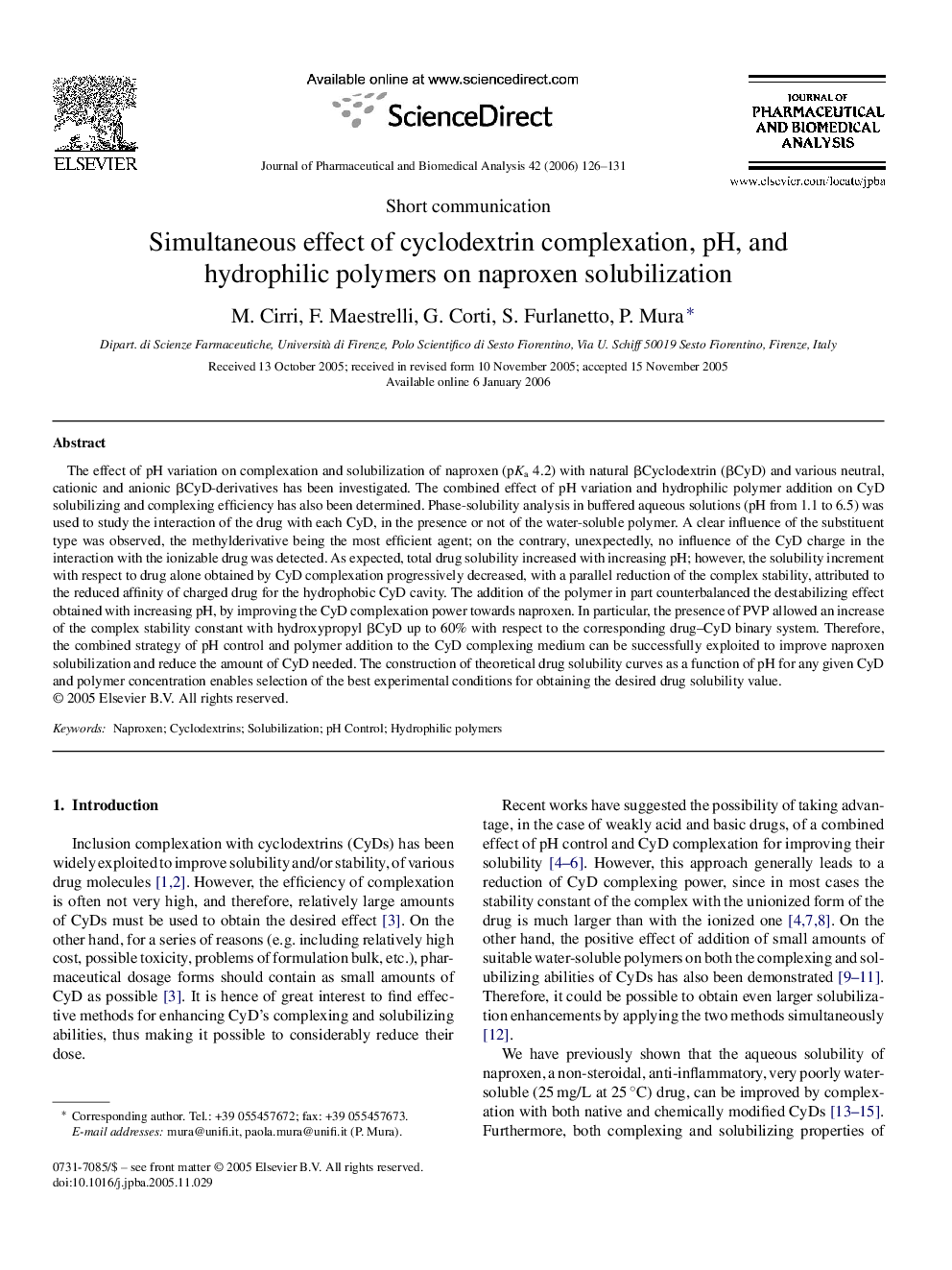| Article ID | Journal | Published Year | Pages | File Type |
|---|---|---|---|---|
| 1224883 | Journal of Pharmaceutical and Biomedical Analysis | 2006 | 6 Pages |
The effect of pH variation on complexation and solubilization of naproxen (pKa 4.2) with natural βCyclodextrin (βCyD) and various neutral, cationic and anionic βCyD-derivatives has been investigated. The combined effect of pH variation and hydrophilic polymer addition on CyD solubilizing and complexing efficiency has also been determined. Phase-solubility analysis in buffered aqueous solutions (pH from 1.1 to 6.5) was used to study the interaction of the drug with each CyD, in the presence or not of the water-soluble polymer. A clear influence of the substituent type was observed, the methylderivative being the most efficient agent; on the contrary, unexpectedly, no influence of the CyD charge in the interaction with the ionizable drug was detected. As expected, total drug solubility increased with increasing pH; however, the solubility increment with respect to drug alone obtained by CyD complexation progressively decreased, with a parallel reduction of the complex stability, attributed to the reduced affinity of charged drug for the hydrophobic CyD cavity. The addition of the polymer in part counterbalanced the destabilizing effect obtained with increasing pH, by improving the CyD complexation power towards naproxen. In particular, the presence of PVP allowed an increase of the complex stability constant with hydroxypropyl βCyD up to 60% with respect to the corresponding drug–CyD binary system. Therefore, the combined strategy of pH control and polymer addition to the CyD complexing medium can be successfully exploited to improve naproxen solubilization and reduce the amount of CyD needed. The construction of theoretical drug solubility curves as a function of pH for any given CyD and polymer concentration enables selection of the best experimental conditions for obtaining the desired drug solubility value.
